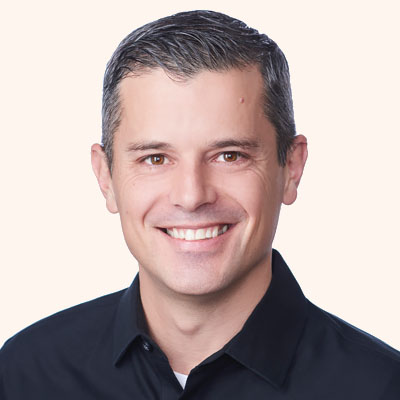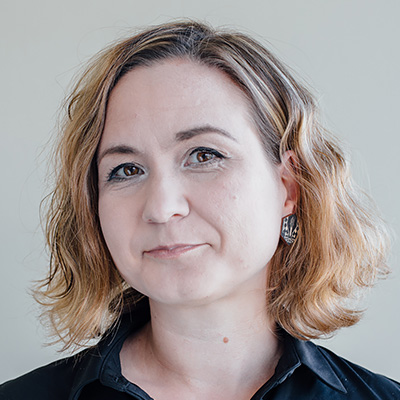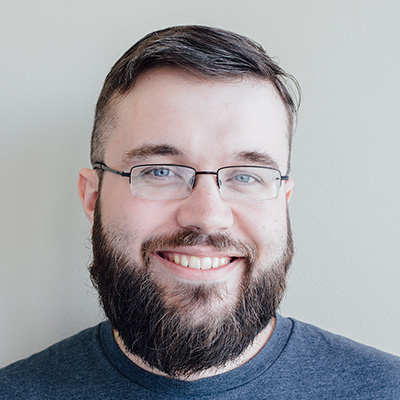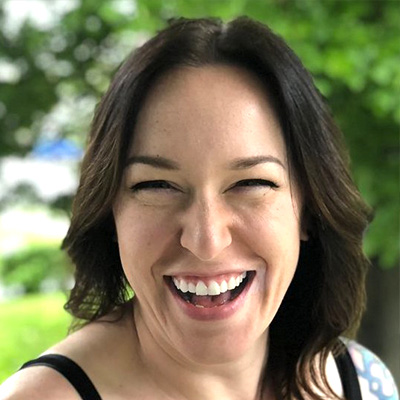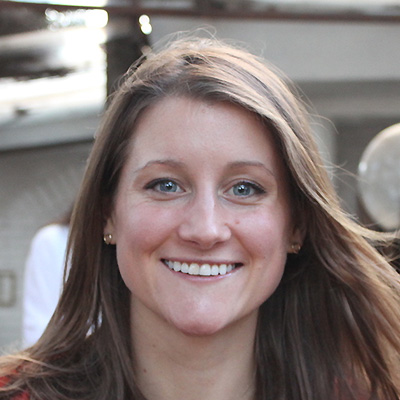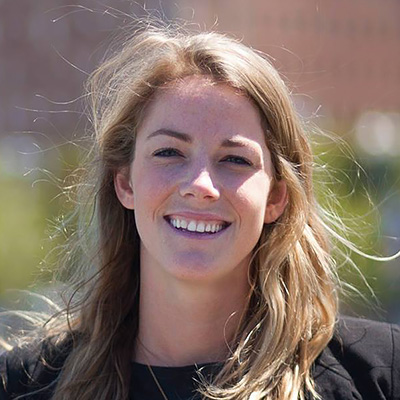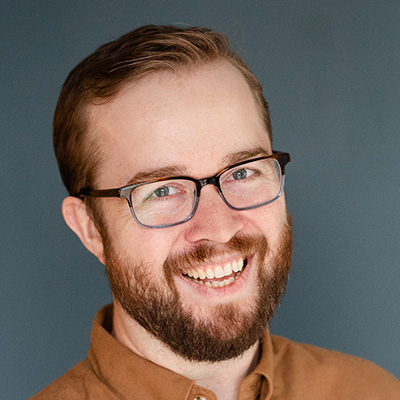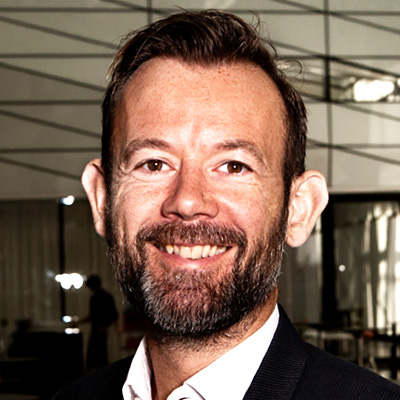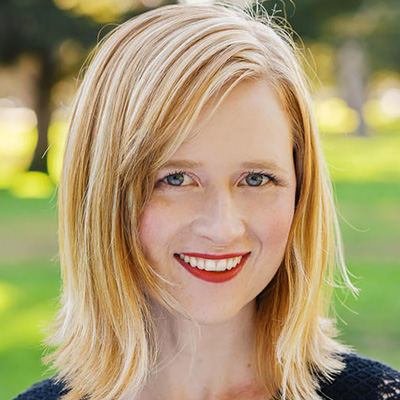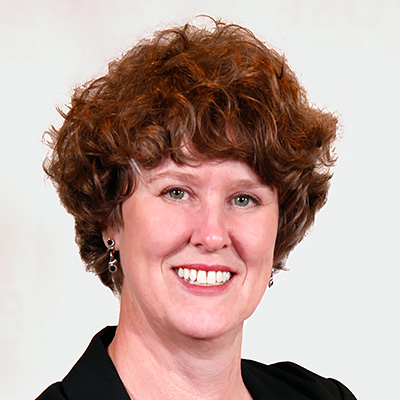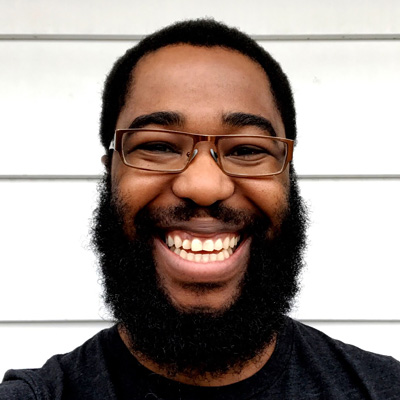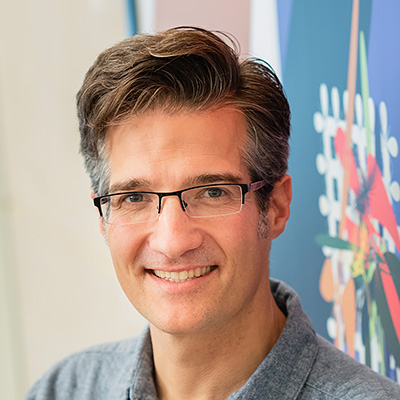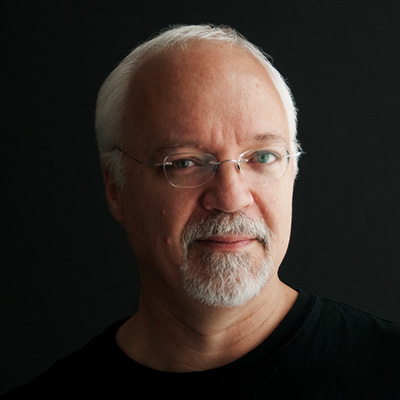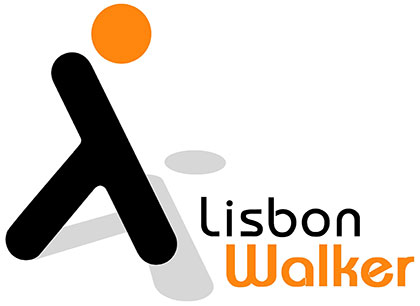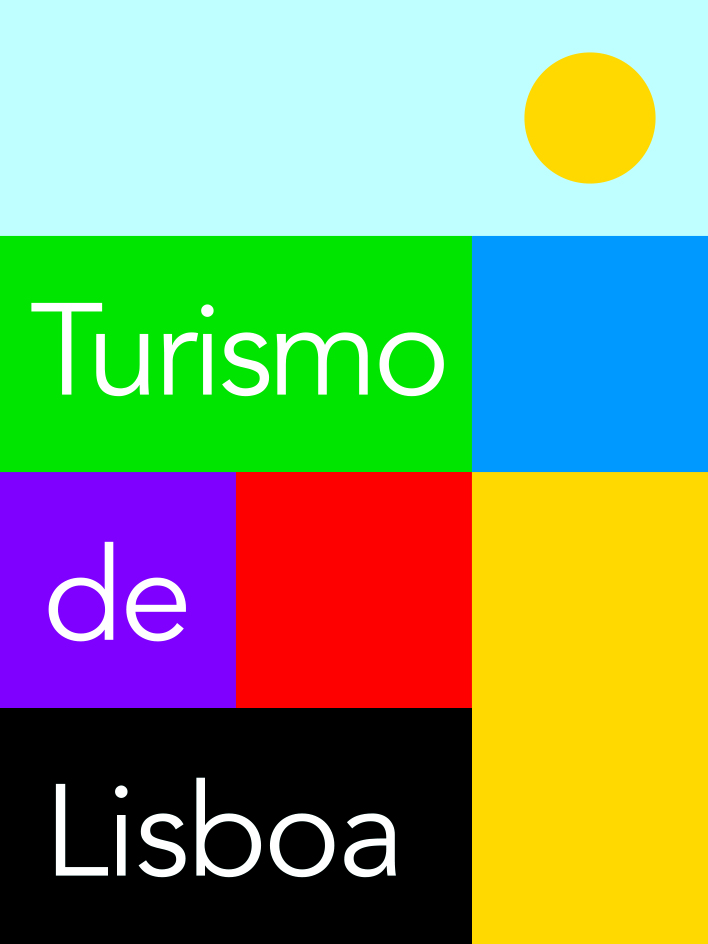Programme
4 days to hone new skills
View the Programme by Ticket
Workshop Selection
Every morning you’ll be able to choose which workshops you want to attend, giving you the flexibility to adjust your learning path. Workshop registration is on a first come first served basis, and you’ll get tokens for the selected workshops.
| Day 1 21 May |
|---|
-
8:00 Check-in & Workshop Registration 9:00 Full-Day Workshops Choose One Bellow: 17:30 -
Scalable Design Systems Audit. II Nathan Curtis A design system is a framework of practices that bring designers and products together. It is a platform to identify, decide on, and document what to share, whether a visual style, design patterns, front-end UI components, and practices like accessibility, research, content strategy. This workshop exposes you to the broad range of those considerations – the kinds of parts, products, people and practices involved – and equips you with tools and activities to start, spread, and sustain a system yourself. -
Intelligence Augmentation for Service Design Audit. III Annina Antinranta with Daryl Weir Machine learning and AI are the talk of the tech industry, but remain shrouded in hype. What does it actually mean to use these technologies in your business? How does including AI in your application change the design process? What can go wrong? In this workshop, we introduce a set of design tools for Intelligence Augmentation: that is, the use of machine learning in user-facing contexts where the goal is to increase rather than replace a human's capabilities.
|
|
|
|
| Day 2 22 May |
|---|
-
8:00 Check-in & Workshop Registration 9:00 Half-Day Workshops Choose One Bellow: 12:30 -
Designing Across Senses Audit. II Christine Park With the increasing number of ways for people to interact with technology, more and more experiences blend multiple interface modes together across a much wider range of uses and contexts. In this workshop, we will look at the different kinds of interface modes, the different kinds of usability they create for people, and how to blend them together into cohesive product experiences. -
The Feedback Loop Audit. III Claire Lew Giving, receiving, asking for, and acting on feedback well are some of the most-valued – yet difficult to master – skills for any manager. After years of research across hundreds of companies in 25+ countries, Claire Lew, CEO of Know Your Team, shares the playbook for how the most effective managers create a culture of feedback within their teams. -
Product Management for Designers Room 1 Becki Hyde This workshop provides an introduction to Product Management tailored to a designer audience, and gives participants methods for working more effectively with Product Managers, or for moving into that role themselves. During this workshop, participants will gain an understanding of key concepts of Product Management, via activities that demonstrate methods for idea generation, prioritization, and collaboration. -
Strategic Storytelling Room 2 Brittney Dunkins Great storytellers aren't perfect, and good stories aren't an exact science – but there are plenty of ways to improve. This workshop is designed for storytellers aiming to sharpen their skills, embrace their weaknesses, and have an open dialogue around how we can work smarter. -
Improv UX Room 5 Mike Gorgone ImprovUX is a fun and INTERACTIVE workshop that apply the skills of Improvisation (listening, acceptance, support, collaboration, letting go of judgment, etc.) to the world of User Experience. -
14:00 Half-Day Workshops Choose One Bellow: 17:30 -
Practical Jobs to Be Done Audit. II Jim Kalbach This workshop is designed to give you concrete, practical skills use can use to apply JTBD to create high-value products and services. We'll work in groups to get hands-on experience and have lively conversations. -
DesignOps Workshop Audit. III Kristin Skinner This workshop will focus on how to establish best practices for end-to-end experience oversight, and all the critical pieces together – strategy, business goals, design, execution, technology, and customer needs – to produce amazing experiences for multiple platforms. -
Service Experience Games Room 1 Kate Edgar with Gabrielle Parsons In this half-day workshop you'll learn how to design Service Experience Games to turn power struggles into collaborative relationships. I'll introduce you to the building blocks of game design, and show you how to put them into practice. You'll prototype and iterate Service Experience Games in response to real-life scenarios - helping you to collaborate more effectively with all of the people (and the systems, process, and tools) that have a stake in the success of the Service Experience you are designing. -
Voice and Tone for Interfaces Room 2 Michael Metts Interface components like buttons, menus, errors, and confirmation messages are built with words, and it's remarkable how much a consistent voice and tone matter. Are you using an efficient, informative voice, or do you sound more like a quirky, lovable goofball? The appropriate voice builds trust, increases retention, humanizes interactions, and ultimately drives conversions and other business goals. Drawing on his experience writing and designing for digital products, Michael will teach you how to apply these concepts to your work. -
LEGO® Serious Play® Room 5 Kåre Bach Kristiansen The workshop gives you a 'hands-on' introduction to the LEGO® SERIOUS PLAY® method - a methodology created to enhance development and innovation by actually constructing purpose, vision, identity and goals for people or organisations.
|
|
|
|
| Day 3 23 May |
|---|
-
8:00 Check-in & Workshop Registration 9:00 Half-Day Workshops Choose One Bellow: 12:30 -
Augmented Reality Audit. II Jessica Outlaw Augmented Reality (AR) apps let people see digital renderings in their physical reality. Apple, Facebook, and Snapchat are patenting techniques to insert digital images on top of real world objects and rapidly iterating on interaction design patterns for them. The goals of the workshop are to give designers or design producers a background on immersive tech, how interaction design, existing AR use cases, and then let participants prototype their own Augmented Reality experience during the workshop. -
Measure What Matters Audit. III Kate Rutter As UX designers, we are storytellers who blend words and pictures into compelling experiences. And yet, our current methods don't answer the big question: "does our product work for our users?" By adding metrics to our design toolkit, we are better equipped to measure interactions that are core to the product. In this workshop we'll explore the world of measures, metrics, and performance indicators as you create actionable, UX-centered metrics to gain insights into your product's progress. -
Diverse Teams Room 1 Farai Madzima In this workshop Farai will explain key differences between cultures and how these differences show up in the workplace. Through practical exercises he'll show how we can build our cultural awareness and work together better in diverse, multicultural teams. -
Designing Across Senses Room 2 Christine Park With the increasing number of ways for people to interact with technology, more and more experiences blend multiple interface modes together across a much wider range of uses and contexts. In this workshop, we will look at the different kinds of interface modes, the different kinds of usability they create for people, and how to blend them together into cohesive product experiences. -
Improv UX Room 5 Mike Gorgone ImprovUX is a fun and INTERACTIVE workshop that apply the skills of Improvisation (listening, acceptance, support, collaboration, letting go of judgment, etc.) to the world of User Experience. -
14:00 Half-Day Workshops Choose One Bellow: 17:30 -
The Visual Display of Information Audit. II Stephen Anderson In this workshop, Stephen P. Anderson will reveal the basic elements that make up every visual representation ever created. Much like there's a grammar behind the written word, there's is a similar grammar behind the visual display of information, that once understood enables you to create clear and concise visual representations of thought. Rather than fall back on the playbook of existing models, you can learn how to create your own visual models. -
Emotionally Intelligent Design Audit. III Pamela Pavliscak The convergence of affective computing and AI promises to lead us in to an era of emotionally intelligent machines. Will machines with a higher EQ help or harm? As future feeling designers, it will (partly) be on us to cultivate empathetic interactions, broaden our emotional range, and bridge cultural sensitivities. In this fun, interactive session, we'll create a portfolio-worthy emotion AI experience while we learn about new tools and techniques. -
Practical Jobs to Be Done Room 1 Jim Kalbach This workshop is designed to give you concrete, practical skills use can use to apply JTBD to create high-value products and services. We'll work in groups to get hands-on experience and have lively conversations. -
The Feedback Loop Room 2 Claire Lew Giving, receiving, asking for, and acting on feedback well are some of the most-valued - yet difficult to master - skills for any manager. After years of research across hundreds of companies in 25+ countries, Claire Lew, CEO of Know Your Team, shares the playbook for how the most effective managers create a culture of feedback within their teams. -
Dialogue Facilitation Room 5 Marc Rettig Too often, a team's conversational arsenal is limited to enthusiastic vision, heartfelt persuasion, or plain old argument. This workshop is based on the premise that UX and design professionals can increase their effectiveness by expanding their kit of communication tools beyond observation and interviews, beyond meetings and presentations, advocacy, and persuasion. Let's increase our portfolio of tools for fostering good conversation.
|
|
|
|
| Day 4 24 May |
|---|
-
8:00 Check-in 9:00 Talks 12:30 -
9:00 The Future of Design Audit. I Stephen Anderson We need a new kind of designer, focused on problems of scale and the algorithms that can help - or exacerbate - matters. Historically, designers have improved the world through the thoughtful design of products and experiences. But these delightful moments mean little if we fail to design for the complex, dynamic, and increasingly tech-driven systems in which we now live. As designers, we need to start seeing ourselves as change agents. What new skills are required to design in this future? -
9:45 Using Embodied Cognition to Create Novel Interaction Design Patterns Audit. I Jessica Outlaw As Virtual and Augmented Reality technology becomes increasing common, there are new possibilities for designers to apply years of research on embodied cognition. Come learn how immersive technology allows for real-time feedback based on how the user is moving and where their gaze is directed. And how you can create novel interaction design patterns that improve a user's attention and memory and influence their decision-making and problem-solving. -
10:45 Systems of Systems Audit. I Nathan Curtis As large organizations embed design systems, they'll often find they have multiple systems. A search for the "one source of truth" collides with another truth: change and coordination across business units is hard, alignment is costly and effortful, and sometimes there's good reasons for having many systems loosely coupled. In this conversation, we'll explore the nature of systems of systems, tiered for participation at many levels across an organization. -
11:25 Making Magic with Cross-Disciplinary Collaboration Audit. I Becki Hyde Technology moves fast. To keep up, we must be flexible and collaborative. While specialization is valuable for perfecting your craft, magic happens when cross-disciplinary teams come together to solve problems. In this session, Becki Hyde shows how product designers, software engineers and product managers can work closely together to deliver human-centered software in a world of ambiguity. Learn how the three disciplines can learn from one another, contribute to each others' work and grow their careers all at the same time. -
12:00 Peace is Waged with Sticky Notes Audit. I Jim Kalbach Can design have a greater impact beyond commercial settings? That's what Jim Kalbach, author of Mapping Experiences, pondered when a global counter-terrorism organization approached him to facilitate a workshop in Abu Dhabi. Earlier this year, Jim applied mapping techniques to help understand the experience of former violent extremists. In this talk, Jim will discuss the details of his inspiring project and reflect on some of the experiences he had working with ex-hate group members. He'll then show his approach in applying principles of experience mapping and design thinking techniques to a non-commercial setting. In the end, our skills and methods can have an impact on the broader social good. -
14:00 Talks 17:40 -
14:00 Next-Gen Empathy in the Age of Automation Audit. I Pamela Pavliscak Is technology killing empathy? Studies suggest that empathy is on the wane and technology might be partly to blame. From self-care to selfies, fail videos to filter bubbles, existential loneliness to righteous outrage, we are confronting the possibility that human-centered practice hasn't created human-centered technology. As if we needed more proof, technologists are now trying to solve the "empathy problem" with emotional AI, VR, and chatbots. One thing is clear, empathy is more than a step in the design process or a new feature to add on. In this talk, we'll consider what it might mean to design technology for cultivating a cohesive society where fellow feeling flourishes. -
14:35 Taking "Participatory" Seriously Audit. I Marc Rettig In the world and work of "social design," participatory methods and strategic approaches have been deepening and maturing. Since all work is social to some degree, our teams and organizations can learn from those approaches. How do we listen to the system that surrounds our work? How can we craft invitations that bring people together as co-creators? What does it look like to involve the people who will "live the change" as full participants in the creative process? Through examples, method snapshots, and long-term cases, this talk offers a glimpse into the methods of participatory emergence. -
15:10 Escaping the Stagnation Sandpit Audit. I Kate Rutter For a business to thrive, it must find and retain strong UX talent that creates customer-centered products and services. Most professionals don't have time to continually expand their knowledge of new technologies and tools, but their work relies on this currency. How can we stay up-to-date in a world constantly in flux? This talk explores techniques to build a culture of continuous learning in the workplace for new and seasoned professionals who want to stay current on emerging tools and avoid stagnation. Learn techniques that UX teams can use to be agile and resilient in the face of ever-evolving technologies. -
16:15 The Only One of Your Kind in the Room Audit. I Farai Madzima In this talk, Farai traces his career journey from contributor to lead, during most of which he was the only one of his kind in the room. He also shares insights from interviews he's conducted with tech contributors and leaders around the world. The result is a session filled with tactics that can leaders can use immediately to better understand, mentor, and sponsor the "one of a kind" folks in their teams to their full potential. -
16:50 From Design Thinking to Creative Confidence Audit. I Tom Kelley Individuals and organizations all over the world are experimenting with design thinking as a methodology for helping them create innovative user experiences. In this presentation, IDEO Partner Tom Kelley will describe the opportunity to go beyond understanding the toolset of design thinking and embrace a mindset of creative confidence. Drawing on his research from the New York Times bestseller this topic, Tom will highlight strategies for nurturing continuous innovation. Throughout his presentation, Tom will illustrate his ideas using real-life examples from thirty years of working in the field of design and innovation.
|
|
|
|
|
